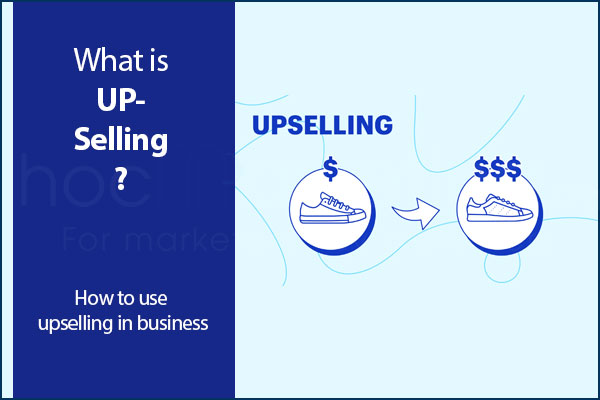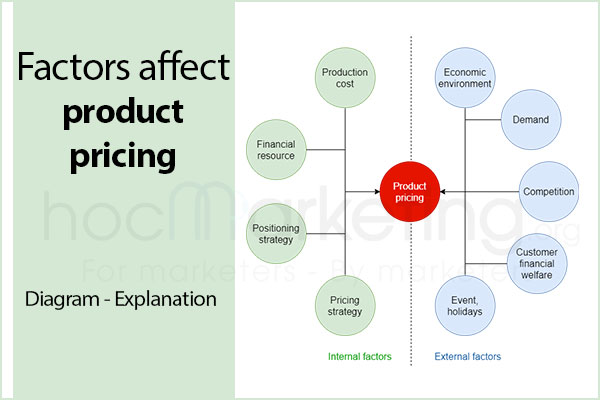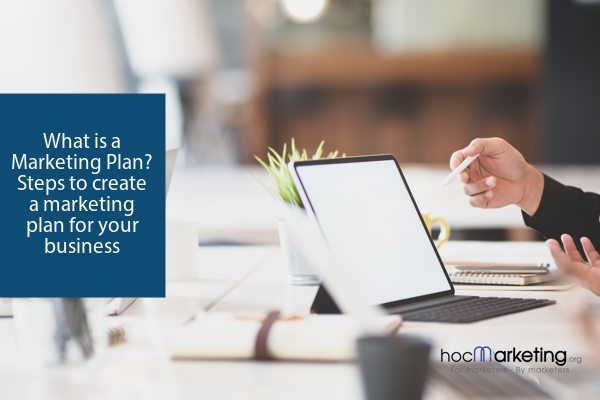
What is Upselling? How to use upselling in business

How many times have you heard the word upsell and thought, "What does that mean?" Upselling is a technique used by businesses to increase the value of customer purchases. In this blog post, we will go over what upselling is and how to use it in business.
How many times have you heard the word upsell and thought, "What does that mean?" Upselling is a technique used by businesses to increase the value of customer purchases. In this blog post, we will go over what upselling is and how to use it in business.
What is Upselling?
Upselling is a marketing technique that involves persuading a customer to purchase a more expensive product or service than the one they originally planned. The idea is simple: if you have already decided on your purchase, why not go for the best option? Upselling can be used in many different ways and has been found to positively impact sales by as much as 20%.
Benefits of upselling
There are several reasons why this method of marketing is successful.
Upselling is a great tool to increase sales.
Upselling can be used to offer more expensive purchases, build customer satisfaction through offering additional services. These additional options could also include things like warranties or installation costs for products, making your customers want to make larger purchases.
Upselling can be used to build customer satisfaction.
Upselling can be used to build customer satisfaction by offering additional services. These additional options could include things like warranties or installation costs for products, making your customers want to make larger purchases.
Upselling can help build relationships with customers.
Upselling is a method to maintain the relationship with your customer after they have already made their purchase. It lets them know that you want to continue providing excellent service and that you value their business.
For example, a customer might be happy to buy a set of dining chairs from you. But, if they find out there is also a warranty available with the purchase of these chairs, they'll most likely want to go through with that purchase as well so that their seats don't break down in a few years time.
Upselling helps you understand your customers better.
Upselling can help businesses learn more about their customers, such as what they are interested in or willing to pay for. This information can be useful in terms of future sales, marketing campaigns and customer service.
Differences between Upselling and Cross-selling
There are significant differences between upsellling and cross-selling:
Upselling is often used in conjunction with Cross-selling.
Upselling helps to increase the sale of a current product, while cross-selling offers additional services or products that will benefit the customer during and after their purchase.
For example, when you buy a new home theater system from Best Buy for $1,000 they will most likely try to sell you a warranty plan for $200. Upselling is the selling of the warranty after having already made the purchase and cross-selling is offering an additional product that would be beneficial to your customer even if they did not buy anything from you.
Upselling focuses on getting more immediate sales while cross-selling takes longer to pay off.
Upselling is often used to increase short-term revenue. Cross-selling is more about long-term gains, involving the selling of additional high-priced items or services. For example, Best Buy might sell you a warranty plan at the point of sale for your home theater system, which would be an upsell. They might also recommend a service plan, where they will send a technician to your house for a fee. The latter option represents cross-selling because it is an additional purchase that the customer may only make in the future.
Upselling takes place during the sale while Cross-sell occurs after or before the transaction.
Upselling can be done at any point during the sale of a product. Cross-selling is often done after a successful upsell, meaning a customer has already bought one product from you and then you offer them another, related deal that can help them out.
Major types of Upselling
Premium versions
Premium versions are updraded versions of the original product, which give customers more features and benefits. For example, when you go to order a latte at Starbucks they might offer you the option of a grande-sized beverage for only 25 cents more.
Bundling
Bundling is putting together several items or services in one package and selling it as a group at a discounted rate. An electronics store, for example, might offer a TV, cable plan and DVD player together for $500 instead of selling them separately.
Customization
Customizing is the upselling of a product with additional options for design and/or use. For example, when you go to buy a new phone from your wireless carrier they might let you choose between different colors or capabilities of the device.
Add-ons
Add-ons are optional products that customers can purchase simultaneously with their original purchase. These accessories can increase the value and usefulness of a product, or make it more fun to use. For example, when you buy a new laptop from Best Buy they might offer you a carrying case as an add-on sale.
Services
Services include all sorts of things like maintenance and warranties that aren't necessarily physical products but can help improve the quality of a purchase and your customer's experience. For example, you might have bought a new car from a dealership but then they offer to sell you an extended warranty that covers every part on the vehicle for five years.
How to use Upselling in business
Upselling is a fairly easy way to increase revenue, especially when done properly. In addition, many customers tend to think of upselling as a bonus because they get more for their money and it can be an effective tool for getting people who are on the fence about purchasing your product to take the plunge.
Before you begin to upsell
- Have a clear strategy about what you want to upsell. Don't just randomly suggest more expensive items or services to your customers, it can seem like pressure to buy and reduce working. It is important to have a specific goal in mind before you upsell.
- Set a price point for what you're trying to sell. Make sure your product is priced appropriately for the market and that it aligns with similar products offered by competitors, or at least stands out as being unique from other items on the shelf. Consider who your customer is and what they might want.
- Repetition of your products is key, both in store and online. Customers need to be aware of your prices and what's available before they can make an informed decision.
During the upselling
- Make sure you stay professional and respectful to your customers. They should keep feeling like they are being helped by an expert, not pressured into something they don't want or can't afford.
- Offer suggestions that might be helpful for the customer's interests or needs. When you're suggesting items it's important to tie them back into what your customers already want and a clear understanding of your audience.
- If your product isn't selling as well as you'd like, consider putting it on sale. This will make the item more affordable and might attract customers who were previously unaware of its existence (or unhappy with its price).
After the upselling
After a customer has bought something from you, always be sure to thank them for their purchase and provide them with a receipt. Giving customers a reason to come back for future purchases is an excellent way to increase your revenue exponentially.
Upselling can be a difficult concept for customers to understand at first, but when done properly it will not only make the customer feel in-the-loop, but also more confident in their choice of product. This can be an extremely beneficial method of upselling for marketing professionals because it makes the customer feel like they are getting more value for their money and that you actually care about what they want.
Conclusion
Upselling is a way to increase revenue, especially when done properly. It's important for marketers and business owners to remember that upselling should never feel like pressure or an attempt at manipulation. The customer needs to know why their product will be better with the addition of your new item being sold so they are more likely to buy it from you instead of someone else. Make sure you have a clear strategy before beginning any sales pitch in order to get them on board without feeling pressured into anything they don't want or can't afford!














